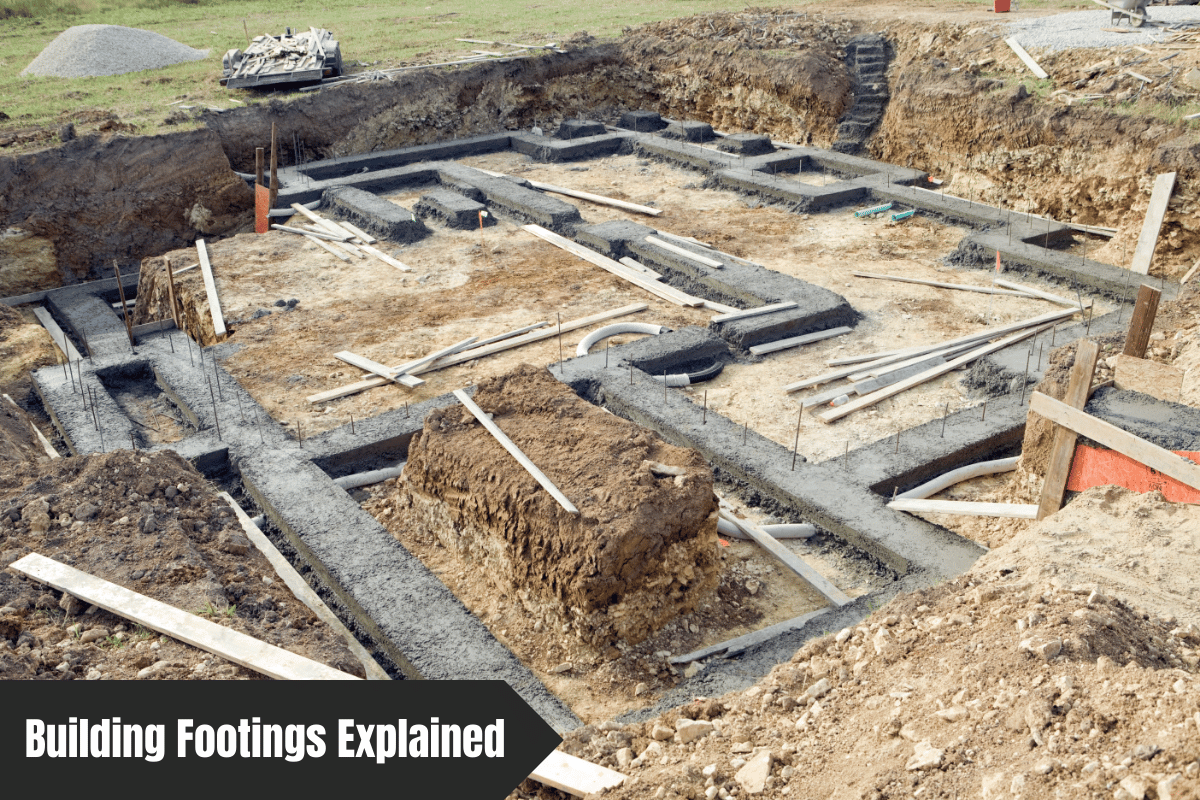Let’s get real for a second: if building footings were a superhero, they’d be the strong, silent type—no capes, just concrete. You might not see them, but they’re literally holding your world together. And here’s the kicker: mess them up, and your dream Home could end up looking like a funhouse mirror. At Golden Bay Foundation Builders, we’ve spent decades geeking out over footings, soil stabilization services, and making sure houses don’t do the cha-cha slide during earthquakes. So grab a coffee, and let’s dig into why footings are the unsung heroes of construction.
Why Footings Matter (Spoiler: They’re Not Just Fancy Rocks)
Ever tried standing on one leg during a yoga class? Now imagine doing it for 50 years while holding up a three-story house. That’s basically what footings do. They spread the weight of your structure evenly, so the ground doesn’t throw a tantrum and sink. But here’s where things get spicy: not all footings are created equal.
- Soil matters: Clay, sand, or something in between? Your footing design depends on it. (FYI, that’s where our soil stabilization services come in clutch.)
- Water is sneaky: Poor drainage? Say hello to erosion and goodbye to stability.
- Seismic shenanigans: If you’re in earthquake country, seismic retrofitting isn’t optional—it’s survival.
We’ve seen homes where the footings were an afterthought, and let’s just say… it wasn’t pretty. Cracked walls, uneven floors, doors that won’t close—it’s like the house is haunted, but the ghost is bad construction.
Types of Footings: Picking the Right Tool for the Job
Not all foundations wear the same boots. Here’s the lowdown on the most common types:
1. The Classic: Continuous Footings
Think of these as the reliable workhorse. A solid concrete strip that runs under load-bearing walls. Perfect for most homes—unless you’re building on quicksand (which, BTW, we don’t recommend).
2. The Floatation Device: Floating Foundations
No, it’s not a pool toy. A floating foundation sits on soil that expands and contracts, “floating” to avoid cracks. Ideal for areas with temperamental soil. Pro tip: Pair it with soil stabilization services for extra insurance.
3. The Minimalist: Post and Pier Foundation
Popular for cabins and older homes, a post and pier foundation uses vertical posts anchored into the ground. Quirky? Sure. But if you’re into crawl spaces and saving cash, it’s a vibe. Just don’t skip the foundation inspections—termites love wooden posts.
4. The Lifesaver: Foundation Underpinning Services
Foundations sagging like a tired mattress? Foundation underpinning services reinforce existing footings with concrete or steel. It’s like giving your house a caffeine boost.
“Help, My House is Falling Apart!” (Common Footing Red Flags)
How do you know your footings are crying for help? Here’s what to watch for:
- Cracked walls: If your drywall looks like a spiderweb, stop blaming the kids. It’s probably foundation shift.
- Doors/windows that stick: Unless you’re haunted, this is a sign of uneven settling.
- Sloping floors: Congrats, your home’s now a carnival ride.
IMO, the biggest mistake homeowners make? Ignoring small issues until they become “call Golden Bay ASAP” emergencies. (Which, hey, we’re here for—but prevention is cheaper than foundation repair.)
When to Call the Pros (Hint: Before Your House Does a Splits)
Look, we get it. DIY is tempting. But unless you’ve got a degree in geotechnical engineering and a concrete mixer in your garage, some jobs need foundation experts. Here’s when to pick up the phone:
- You’re building new: Soil tests, footing design, permits—let us handle the boring stuff.
- You spot cracks wider than a credit card: Hairline cracks? Meh. Gaping fissures? Yikes.
- You’re renovating: Adding a second story? Your footings might need a upgrade.
And hey, if you’re Googling “foundation repair near me,” just skip the middle step and call us. Golden Bay’s team lives for fixing wonky footings, and we’ll even throw in a dad joke or two.
Footing FAQs: Your Burning Questions, Answered
Q: How much does foundation repair cost?
A: Depends on the issue! Minor cracks? Maybe a few grand. Full foundation underpinning services? Let’s just say… invest in a good coffee maker.
Q: Can I fix footings myself?
A: Sure, if you enjoy playing Jenga with your house. Spoiler: Leave it to the pros.
Q: How often should I get foundation inspections?
A: Every 2–3 years, or after major earthquakes/floods. Think of it as a physical for your house.
The Golden Bay Promise: No Drama, Just Solid Foundations
We’ve been around the block (and under a few houses). Whether you need seismic retrofitting, a post and pier foundation tune-up, or just peace of mind, Golden Bay Foundation Builders has your back. Because at the end of the day, a strong footing isn’t just concrete—it’s confidence.
So next time your floors creak or your walls crack, remember: we’re just a call away. And hey, if you’re still reading this, why not reach out? Let’s make sure your home’s foundation is less “funhouse” and more “fortress.”
Table: Footing Types at a Glance
| Type | Best For | Pros | Cons |
|---|---|---|---|
| Continuous Footing | Most homes | Durable, even weight distribution | Costly for large homes |
| Floating Foundation | Expansive soil areas | Adapts to soil movement | Requires expert installation |
| Post and Pier | Light structures/cabins | Affordable, easy access | Prone to pests, not for heavy loads |
| Underpinned Foundation | Fixing existing issues | Strengthens weak footings | Invasive, time-consuming |
Final Thought
: Your house is only as good as what’s underneath it. So let’s build something that lasts—one footing at a time.
